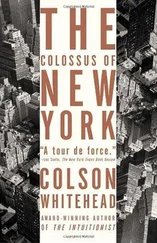Various - The Knickerbocker, or New-York Monthly Magazine, February 1844
Здесь есть возможность читать онлайн «Various - The Knickerbocker, or New-York Monthly Magazine, February 1844» — ознакомительный отрывок электронной книги совершенно бесплатно, а после прочтения отрывка купить полную версию. В некоторых случаях можно слушать аудио, скачать через торрент в формате fb2 и присутствует краткое содержание. Жанр: foreign_antique, periodic, foreign_edu, на английском языке. Описание произведения, (предисловие) а так же отзывы посетителей доступны на портале библиотеки ЛибКат.
- Название:The Knickerbocker, or New-York Monthly Magazine, February 1844
- Автор:
- Жанр:
- Год:неизвестен
- ISBN:нет данных
- Рейтинг книги:3 / 5. Голосов: 1
-
Избранное:Добавить в избранное
- Отзывы:
-
Ваша оценка:
- 60
- 1
- 2
- 3
- 4
- 5
The Knickerbocker, or New-York Monthly Magazine, February 1844: краткое содержание, описание и аннотация
Предлагаем к чтению аннотацию, описание, краткое содержание или предисловие (зависит от того, что написал сам автор книги «The Knickerbocker, or New-York Monthly Magazine, February 1844»). Если вы не нашли необходимую информацию о книге — напишите в комментариях, мы постараемся отыскать её.
The Knickerbocker, or New-York Monthly Magazine, February 1844 — читать онлайн ознакомительный отрывок
Ниже представлен текст книги, разбитый по страницам. Система сохранения места последней прочитанной страницы, позволяет с удобством читать онлайн бесплатно книгу «The Knickerbocker, or New-York Monthly Magazine, February 1844», без необходимости каждый раз заново искать на чём Вы остановились. Поставьте закладку, и сможете в любой момент перейти на страницу, на которой закончили чтение.
Интервал:
Закладка:
Various
The Knickerbocker, or New-York Monthly Magazine, February 1844 / Volume 23, Number 2
SICILIAN SCENERY AND ANTIQUITIES
A few months only have elapsed since I travelled over the classic land of Sicily; and the impressions left on my mind by its picturesqueness, fertility, and the grandeur of its architectural remains, are more vivid, and fraught with more sublime associations, than any I received during my late sojourn in Europe. The pleasure of travelling, it seems to me, is chiefly experienced after the journey is over; when we can sit down by our own snug fire-side, free from all the fatigues and annoyances which are its usual concomitants; and, if our untravelled friends are with us, indulge in the comfortable and harmless vanity of describing the wonders and dangers of those distant lands, and like Goldsmith’s old soldier, ‘Shoulder the crutch and show how fields were won.’ I was about to remark, that those who travel only in books travel with much less discomfort, and perhaps enjoy as much, as those who travel in reality; but I fancy there are some of my young readers who would rather test the matter by their own experience, than by the inadequate descriptions which I have to offer them.
Sicily, as is well known, is the largest island in the Mediterranean Sea. It was anciently called Trinacria, from its triangular shape, and is about six hundred miles in circumference. Each of its extremities is terminated by a promontory, one of which was called by the ancients Lilybeum, and faces Africa; another called Pachynus, faces the Peloponessus of Greece; and the third, Pelorum, now Capo di Boco, faces Italy. The aspect of the country is very mountainous: some of the mountains are lofty; but towering above all, like an enthroned spirit, rises Ætna. His giant form can be seen from elevated grounds in the most remote parts of the island, and the mariner can discern his snowy crown more than a hundred miles. But Sicily abounds in luxuriant plains and charming valleys, and its soil is proverbially rich: it once bore the appellation of the Granary of Rome; and it is now said that if properly tilled it would produce more grain than any country of its size in the world. Its beauty and fertility were often celebrated by ancient bards, who described the sacred flocks and herds of Apollo on its delightful slopes. The plain of Enna, where Proserpine and her nymphs gathered flowers, was famous for delicious honey; and according to an ancient writer, hounds lost their scent when hunting, in consequence of the odoriferous flowers which perfumed the air; and this may be no fable; for in Spring, as I myself have seen, the flowers are abundant and fragrant beyond description; and it seemed to me that the gardens of Europe had been supplied with two-thirds of their choicest treasures from the wild stores of Sicily.
The history of Sicily is as varied and interesting as the features of its surface; but of this I must give only such a brief and hurried sketch as, to those who are not conversant with it, will serve to render the scenes I intend to describe more intelligible and interesting than they otherwise would be. Its early history, then, like that of most nations of antiquity, is wrapped in obscurity. Poets feign that its original inhabitants were Cyclops; after them the Sicani, a people supposed to have been from Spain, were the possessors; then came the Siculi, a people of Italy. The enterprising Phœnicians, those early monarchs of the sea, whose ships had even visited the remote and barbarous shores of Britain, formed some settlements upon it; and in the eighth century before Christ various colonies of Greeks were planted on its shores, and became in time the sole possessors of the island. These Grecian founders of Syracuse, Gela, and Agrigentum, seduced from their own country by the love of enterprise, or driven by necessity or revolution from their homes, brought with them the refinement, religion, and love of the beautiful, that have distinguished their race above all others; and in a short time after their establishment in Sicily, the magnificence of their cities, the grandeur of their temples, equalled if they did not surpass those of their fatherland. About the year 480 before Christ, a fierce enemy landed on the coast of Sicily with two thousand gallies: this was the warlike Carthaginian, whose altars smoked with the sacrifice of human victims. This formidable invader was defeated under the great Gelon of Syracuse, who was called the father of his country; but the Carthaginians, returned again and with better fortune, at length became masters of the island. The Romans next conquered Sicily, and held it for several centuries. The Saracens in the ninth century were in the full tide of successful conquest. They landed first in the bay of Mazara, near Selinuntium, and after various conflicts and fortune, finally subjugated the whole island in the year 878. The crescent continued to glitter over the towers of Sicily for about three centuries, when the Normans, a band of adventurers whom the crusades of the Holy Sepulchre had brought from their northern homes, after a conflict of thirty years under Count Roger, expelled the Saracen in the year 1073, and planted the banner of the cross in every city of the land. Soon after that time it came under Spain and Austria; France and England have severally been its rulers. It is now under the crown of Naples.
Such is a brief outline of the eventful history of Sicily; a land formed by nature in her fairest mould; but which the crimes and ambition of men have desecrated by violence, oppression, and bloodshed; and with the substitution of a word, one might exclaim with the poet:
‘Sicilia! O Sicilia! thou who hast
The fatal gift of beauty, which became
A funeral dower of present woes and past,
On thy sweet brow is sorrow ploughed by shame,
And annals graved in characters of flame.
Oh God! that thou wert in thy nakedness
Less lovely or more powerful, and couldst claim
Thy right, and awe the robbers back who press
To shed thy blood, and drink the tears of thy distress!’
The aspect of Sicily is widely different from that of this country; its beauty is dependent on other forms and associations. Here , we have vast forests that stretch their shady folds in melancholy grandeur; the mountain tops themselves are clad in thick umbrage, which, rejoicing in the glory of the autumnal season, array themselves in rainbow dyes. There , no wide forests shade the land; but mountains more abrupt than ours, and bearing the scars of volcanic fire and earthquake on their brows, are yet clothed with flowers and odoriferous shrubs. The plains and slopes of the mountains are now but partially under cultivation; vineyards and olive-groves generally clothe the latter, while over the gentler undulating country, or the plains, fenceless fields stretch far away, a wilderness of waving grain, through which the traveller may ride for hours nor meet a human being, nor see a habitation, save when he lifts his eyes to some craggy steep or mountain pinnacle, where stands the clustered village. The villages and larger towns are generally set among groves of orange, almond, and pomegranate trees, with here and there a dark Carruba, or Leutisk tree, casting its ample shade. Fields of the broad bean, the chief food of the laboring classes, serves at times to vary with vivid green the monotony of the landscape. The traveller rolls along over no Macadamised road in his comfortable carriage, but mounted on his mule, leaves him to choose his own track among the numerous ones that form what is called the strada-maëstro , or master-road, between city and city. Here and there he will come to a stone fountain, constructed perhaps centuries ago, which still furnishes a delightful beverage for himself and beast. Oftentimes the road leads through a country entirely waste, and covered with tall bunches of grass or the dwarfish palmetto; sometimes in the cultivated districts the road is bounded by the formidable prickly-pear, which grows to the height of twenty feet, or by rows of the stately aloe, and not unfrequently by wild hedges of myrtle, intertwined with innumerable climbing plants, whose flowers the traveller can pick as he rides along. Generally the road-side is perfectly enamelled with flowers of various hue and fragrance. No majestic river, like the Hudson, spreads before him, with all its glittering sails and swift steam-boats; but ever and anon the blue and placid Mediterranean bounds his vision, or indents the shore, with here and there a picturesque and lazy barque reflected in the waves.
Читать дальшеИнтервал:
Закладка:
Похожие книги на «The Knickerbocker, or New-York Monthly Magazine, February 1844»
Представляем Вашему вниманию похожие книги на «The Knickerbocker, or New-York Monthly Magazine, February 1844» списком для выбора. Мы отобрали схожую по названию и смыслу литературу в надежде предоставить читателям больше вариантов отыскать новые, интересные, ещё непрочитанные произведения.
Обсуждение, отзывы о книге «The Knickerbocker, or New-York Monthly Magazine, February 1844» и просто собственные мнения читателей. Оставьте ваши комментарии, напишите, что Вы думаете о произведении, его смысле или главных героях. Укажите что конкретно понравилось, а что нет, и почему Вы так считаете.












